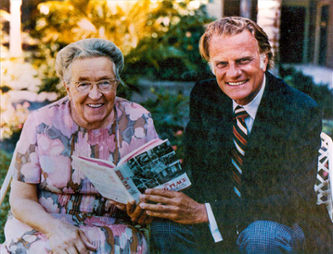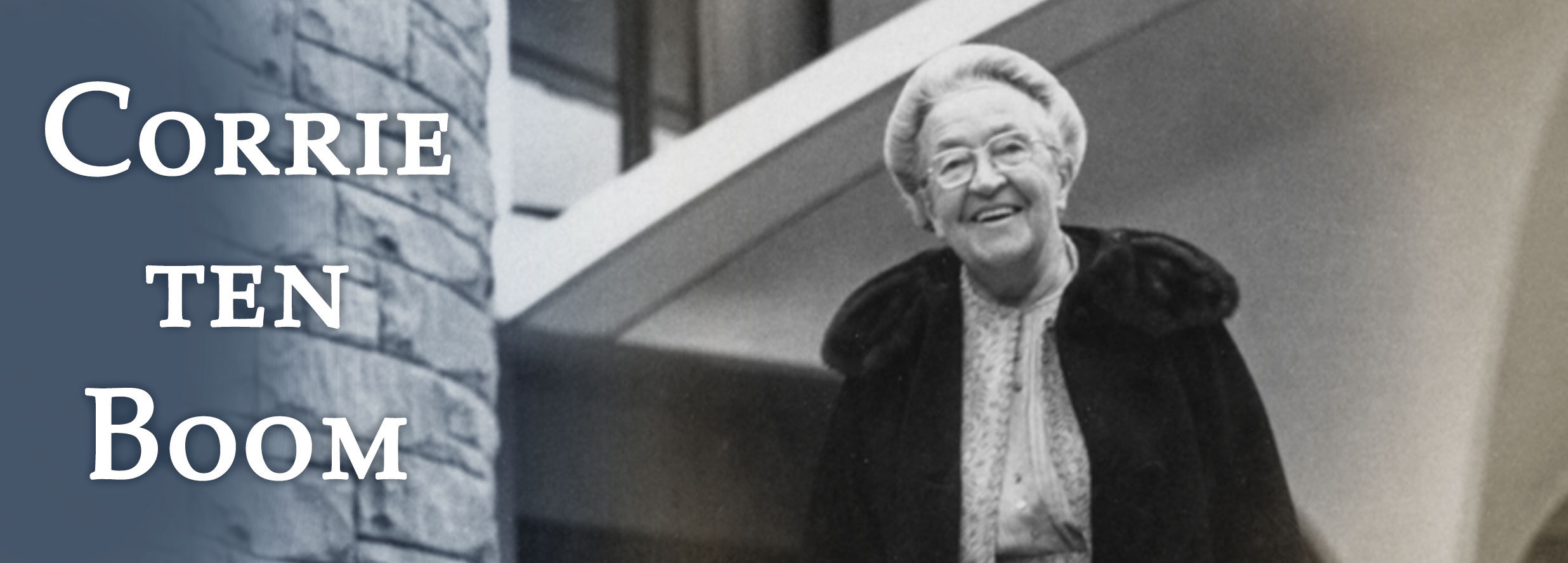The Hiding Place
The Book
1971 saw the publication The Hiding Place by Corrie ten Boom, with John and Elizabeth Sherrill. This is the best-known of Corrie ten Boom's almost two dozen books and has been read by millions worldwide and was adapted into a movie. Pam Rosewell Moore recalls part of The Hiding Place's writing process:
"In 1968 I was present at some writing sessions in the Netherlands, and particularly remember the visit to the site of the Vught Concentration Camp in the south of Holland. This was the first of the two concentration camps in which Corrie ten Boom and her sister, Betsie, were incarcerated for their parts in saving Jewish lives in World War II."
Determined to record facts accurately, Mr. and Mrs. Sherrill asked Miss ten Boom to describe how the avenue on which we were walking looked on the night she and her sister Betsie were taken there. 'Corrie,' said John Sherrill, 'you told us that on that night in 1944 when you and Betsie were brought to this camp there were soldiers near the trees on each side of this avenue. Where were the soldiers exactly? In the trees or beside the trees? And those floodlights you told us were shining on you... Were they in the trees or between the trees?' Miss ten Boom responded, 'I don't remember,' at first unwilling to unlock memories of her wartime experiences.
However, she made herself remember, and the blending of such detail with the element of danger for the Ten Boom family and the rescue of the Jewish people have made this a book about which many still say, "I could not put it down..."

The Movie
In 1975, World Wide Pictures, the film-making arm of the Billy Graham Evangelistic Association, produced a movie version of the book, The Hiding Place. James Collier, who became a fast friend of Corrie ten Boom's, perhaps because they both possessed exceptional gifts of imagination, was the director. Filmed in the Netherlands and in England, the movie was released nationally and internationally and was to become one of the most successful Christian films ever produced.
Corrie ten Boom, although in her eighties, was very involved in the first half of filming in her native country. Because the old Ten Boom watch shop and house had been modernized since the war, the film company rebuilt and redecorated another shop three blocks away. So authentic were the German soldiers' uniforms and so real the film set, that when Corrie ten Boom first entered she exclaimed, "For so many years I have talked about my experiences all over the world, yet I had dismissed those horrible nightmares from my mind. Today, it all suddenly comes back!"
Ravensbruck Concentration Camp, north of Berlin, Germany, where 96,000 women were exterminated, no longer exists. The camp was re-created at an old mobilization center for British soldiers in southern England. Although her doctor recommended she not visit the set depicting the camp, Corrie ten Boom wanted to be there for the final days of shooting.
"It was difficult for me," she said. "The moment I entered the camp I felt it was all real again, maybe too real. It became too much for me. I couldn't hold my tears any longer, and maybe it was good that I cried."

Look for The Hiding Place book and movie at your local bookstore or online.

